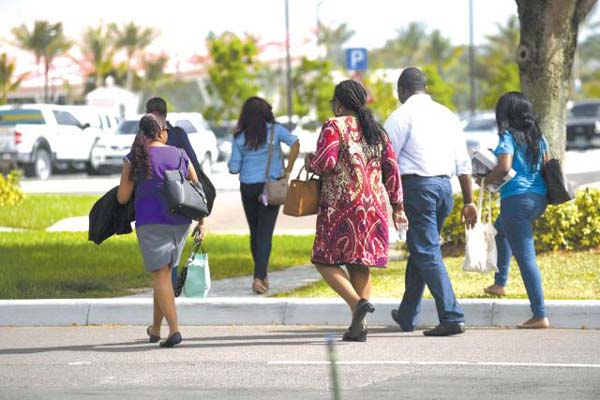Baha Mar has the whole country in a downgrade! What a TIME!

Sarkis’ Baha Mar bankruptcy decision has brought down the whole country! Delaware Court Could Rule Against Baha Mar!
• Growth bottlenecks, including high household indebtedness, loan arrears, and unemployment levels, as well as energy inefficiencies, continue to subdue growth prospects of The Bahamian economy.
• We believe the Baha Mar bankruptcy filing and subsequent legal disputes will depress growth and possibly affect the fiscal and external accounts.
• As a result, we are lowering our foreign and local currency sovereign credit ratings on The Bahamas to ‘BBB-/A-3’ from ‘BBB/A-2’.
• The negative outlook reflects the greater than one-in-three chance that we could lower our ratings on The Bahamas if a prolonged resort opening delay creates further external liquidity or fiscal pressure, or if the legal proceedings highlight institutional weaknesses.
Rating Action
On Aug. 25, 2015, Standard & Poor’s Ratings Services lowered its foreign and local currency sovereign credit ratings on The Commonwealth of The Bahamas to ‘BBB-/A-3’ from ‘BBB/A-2’. At the same time, we removed the ratings from CreditWatch, where they were placed with negative implications on July 2, 2015. The outlook is negative. In addition, we lowered our transfer and convertibility (T&C) assessment for The Bahamas to ‘BBB’ from ‘BBB+’.
Rationale
We lowered our ratings on The Bahamas to reflect both long-term vulnerabilities and the short-term economic shock of the Baha Mar bankruptcy filing and subsequent legal disputes. The long-term vulnerabilities include a weakening external position and fragile domestic economy. The net external debt of the public and financial sectors has risen from 14% of current account receipts (CAR) in 2008 to an estimated 48% of CAR this year. The net external financing needs of the public and financial sectors rose from 141% of CAR to 159% during the same period. These figures do not include the external debt and foreign direct investment in the island’s substantial tourism sector. In the domestic economy, nonperforming loans are more than 15% of total loans. Consumer credit and outstanding residential mortgages are more than 60% of
GDP. Unemployment–excluding seasonal effects–remains elevated. An inefficient energy sector pushes up energy costs and weighs on growth.
The short-term economic shock pertains to the Baha Mar bankruptcy filing and subsequent ongoing legal disputes. Since we placed our ratings on The Bahamas on CreditWatch, we believe that the chances the dispute will be settled quickly have become more remote (see “The Commonwealth of The Bahamas ‘BBB/A-2’ Ratings Placed On CreditWatch Negative After Baha Mar Filed For Bankruptcy,” published July 2, 2015, on RatingsDirect). We do not believe that the parties involved–the developer, Baha Mar Ltd.; its main lender, the Export-Import Bank of China; and the contractor, China Construction America–will manage to resolve their differences in time for the resort to open for the high season beginning in December. Not only do we see the completion of construction of this $3.5 billion mega-resort being delayed, but we also expect that bookings will take longer to fill the complex once it does open, given the reputational damage to the resort’s brand as well as the time needed to obtain new airlift capacity for the resort, among other issues.
We believe that the combination of long-term vulnerabilities with a short-term economic shock will continue to place The Bahamas in a low-growth trend, with real GDP per capita growth of less than 1% over the next several years. This is less than we forecast for its peers with similar levels of GDP per capita, and it follows negative real GDP per capita growth since 2008.
On the other hand, the government has made progress improving the country’s fiscal deficits, particularly through the introduction of the value-added tax (VAT) in January 2015. Preliminary estimates show that from January to June, the government collected about Bahamian dollar (BS$) 150 million in new net revenue from the VAT. We believe that this, along with formalization spillovers from the modernized tax systems, will contribute to a deceleration in the increase of general government debt to just below 3% of GDP in 2015, from almost 7% in 2014. Although this progress has contributed to our decision to keep the rating on The Bahamas in the investment-grade category, the fiscal reform measures will need to be accompanied by higher growth in order to stabilize the government’s debt burden.
The introduction of the VAT further demonstrates the sovereign’s track record of generally prudent policies through different governments, which has provided the country with institutional stability, and supports The Bahamas’ creditworthiness. The Progressive Liberal Party government has a legislative majority and does not need to face elections until 2017. The rating on The Bahamas also continues to reflect the government’s monetary policy, which sets the Bahamian dollar at parity with the U.S. dollar, and primarily uses credit ceilings and capital controls to influence money supply. We expect these policies to remain in place in the rating horizon.







![A Con Artist [RACIST] wants Bahamians to fight progress – WELL, WHAT IS THIS?!](https://www.bahamaspress.com/wp-content/uploads/2025/07/Toby-Smith-218x150.jpg)


